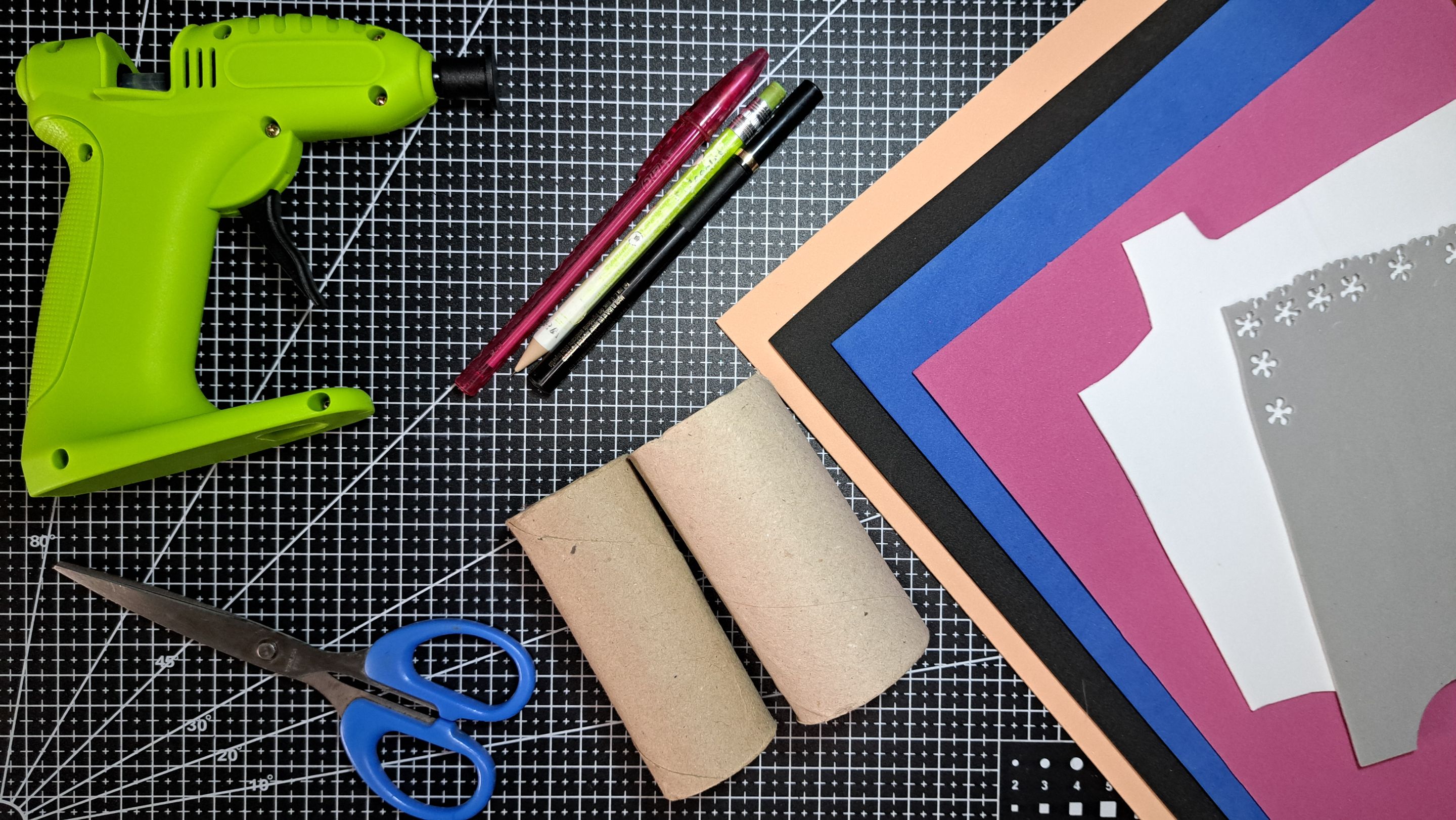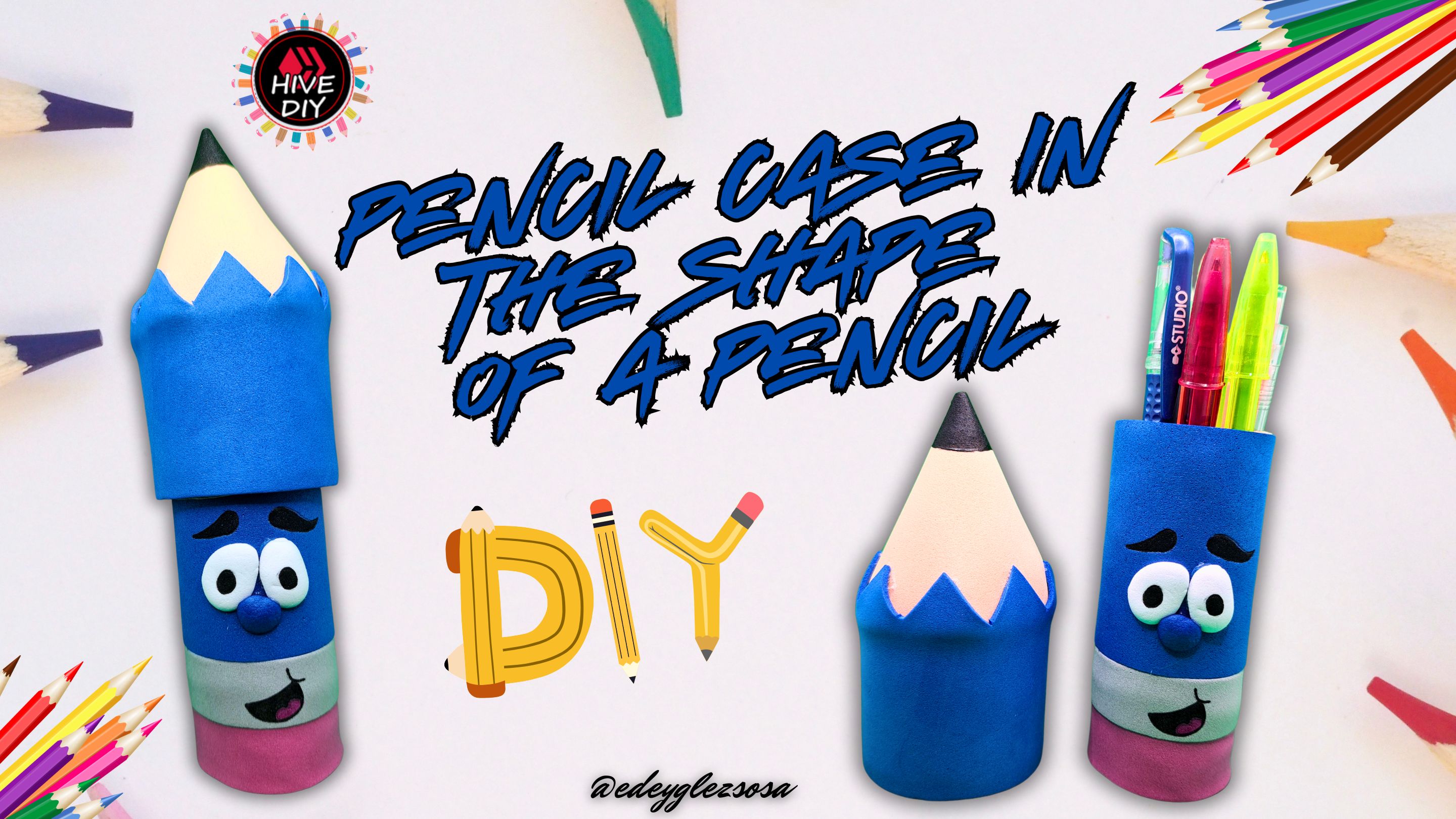Hello-hello, crafty friends.
Once again I'm here sharing with you another of my creations and this time I want to show you how to make a beautiful pencil case in the shape of a pencil. Quite a tongue twister, isn't it? But if you want to make it more complicated, you can call it a pencil case in the shape of a pencil, where pencils will be kept. I think it sounds better in Spanish, though. 😅
But don't be fooled by its appearance, as the procedure is really simple and no large amounts of materials or complex tools will be needed. Personally, I consider this a very good thing, as the essence of DIY is to do things by yourself, as the acronym in English well indicates. So don't miss the opportunity to create your own case to surprise a little school child with a beautiful gift. Let's get started...
Hola-hola, amigos artesanos.
Una vez más estoy por acá compartiéndoles otra de mis creaciones y en esta ocasión quiero enseñarles cómo confeccionar un hermoso estuche para lápices con forma de lápiz. Vaya trabalenguas, ¿verdad? Pero si quieren complicarlo más, pueden llamarlo estuche para lápices con forma de lápiz, donde se guardarán lápices. Aunque creo que en español suena mejor. 😅
Pero no se dejen engañar por su aspecto, ya que el procedimiento es realmente sencillo y no harán falta grandes cantidades de materiales o herramientas complejas. Personalmente, considero que esto es muy bueno, pues la esencia del DIY es hacer las cosas por uno mismo, como bien indican las siglas en inglés. Así que no pierdan la oportunidad de crear su propio estuche para sorprender a algún pequeño escolar con un hermoso regalo. Comencemos…
Materials // Materiales

Step by step // Paso a paso
1️⃣ The first thing to do is to mark the side of the cardboard tube to divide it into 3 sections. Mine measured 12 cm, so I divided it into 6.5 cm, 3.5 cm and 2.5 cm. To cover these areas, mark and cut out three pieces of blue, gray and pink fomi, respectively. First glue the blue piece that corresponds to the pencil body. Underneath, glue the gray one, which would be the pencil cap, and underneath the smallest part, the pink one, which would be the eraser.
Lo primero será marcar el costado del tubo de cartón para dividirlo en 3 secciones. El mío medía 12 cm, por lo cual lo dividí en 6.5 cm, 3.5 cm y 2.5 cm. Para cubrir esas áreas se deben marcar y recortar tres piezas de fomi azul, gris y rosa, respectivamente. Primero se pega la pieza azul que corresponde al cuerpo del lápiz. Debajo se pega la gris, que vendría siendo el casquillo del lápiz, y debajo la parte más pequeña que es la rosa, que sería la goma.
2️⃣ For the upper part of the case, a wider cardboard tube or one of the same diameter as the base will be used, but it must be opened. Using scissors, make triangular cuts to close one of its ends, which will then be covered with a smooth skin-colored fomi cone.
Para la parte superior del estuche se utilizará un tubo de cartón más ancho o uno de igual diámetro que el de la base, pero se debe abrir. Utilizando unas tijeras, se le harán unos cortes triangulares para cerrar uno de sus extremos, el cual posteriormente se cubrirá con un cono de fomi liso color piel.
3️⃣ To finish with the lid of the case, cut a large piece of 6 cm wide, to which triangles of 2 cm base are cut on one of its sides. This piece of fomi should be glued around the cardboard of the lid, covering all the exposed area and then gluing the tips of the triangles on top of the skin-colored fomi cone.
For an additional touch, paint the tip of the cone black to create the graphic tip of the pencil. If you don't have paint available, you can use black colored fomi and create a smaller cone that is then glued on the tip.
Para terminar con la tapa del estuche, se debe recortar una pieza grande de 6 cm de ancho, a la cual se le recortan triángulos de 2 cm de base en uno de sus laterales. Esta pieza de fomi se debe pegar alrededor del cartón de la tapa, cubriendo toda el área expuesta y luego pegando las puntas de los triángulos encima del cono de fomi color piel.
Para dar un toque adicional, se pinta la punta del cono de color negro para crear la punta gráfica del lápiz. En caso de no contar con pintura, se puede utilizar fomi de color negro y crear un cono más pequeño que luego se pega en la punta.
4️⃣ The mouth of the pencil will be drawn on top of the eraser cap. To draw it, first mark its outline with a light pencil, then paint the tongue in red and the rest of the mouth in black.
La boca del lápiz estará dibujada encima del casquillo de la goma. Para dibujarla, primero se marca su contorno con un lápiz claro, y encima se pinta la lengua de color rojo y el resto de la boca de color negro.
5️⃣ In the case of the eyes, white fomi will be used and blue fomi for the nose. To give it a more striking touch, the cut out pieces of fomi will be heated and, once they swell, they will be glued right in the center of the blue stripe.
To finish, black paint or a black marker will be used to draw the eyebrows and pupils, leaving the pencil face and the pencil case as such.
En el caso de los ojos, se empleará fomi blanco y fomi azul para la nariz. Para darle un toque más llamativo, se calentarán las piezas de fomi recortadas y, una vez que se hinchen, se pegarán justo en el centro de la franja azul.
Para finalizar, se utilizará pintura negra o un marcador negro para dibujar las cejas y las pupilas, quedando listo el rostro del lápiz y el estuche como tal.
Finished Work // Trabajo Terminado
As you may have noticed, the procedure is simple and it is not necessary to use complex materials to create this pencil case with pencil fomi. I hope you liked this craft and that the tutorial is easy to understand, because for now I am very happy to have shared with you this creation.
Como habrán podido notar, el procedimiento es simple y no es necesario utilizar materiales complejos para poder crear este estuche para lápices con fomi de lápiz. Espero que les haya gustado esta manualidad y que el tutorial sea de fácil comprensión, pues yo por ahora me despido muy contento de haber compartido con ustedes esta creación.

Credits and Resources // Créditos y Recursos
Cover page created in
CanvaTranslated by
DeepLImages captured with my
Samsung Galaxy A53Inspiration
Source



